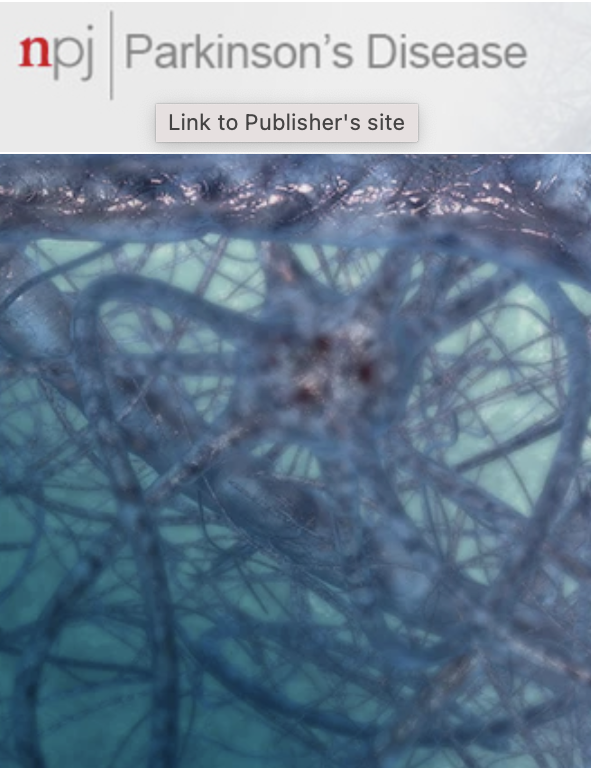Predicting Parkinson's disease and its progression based on radiomics in T1-weight images and α‑synuclein in cerebrospinal fluid.
IF 8.2
1区 医学
Q1 NEUROSCIENCES
引用次数: 0
Abstract
This study aimed to develop a radiomics model that can predict Parkinson's disease (PD) and its progression of using T1-weighted images (T1WI), and to evaluate the prediction performance of a multimodal model incorporating clinical factors. We selected all participants from the Parkinson's Progression Markers Initiative (PPMI) (n = 205) database and Qilu Hospital of Shandong University (Qingdao) (n = 60). The patients were tracked over 4-5 years via Hoehn-Yahr Scale (HYS) and categorized into stable PD (SPD: HYS unchanged) and progression PD (PPD: HYS increase). Participants from the PPMI database were randomly divided into a training dataset and an internal testing dataset to construct radiomics models, which were validated by the Qilu Hospital database as an independent testing dataset. Only participants from the PPMI database had cerebrospinal fluid (CSF) α‑synuclein (α-syn) data, which were used to establish a combined model. The radiomics-based classifier for healthy controls (HC) and PD achieved areas under the receiver operating characteristic curves (AUROCs) of 0.787 and 0.746 in the internal and independent testing datasets, respectively, while the AUROCs were 0.857 and 0.802 in predicting SPD and PPD, respectively. Moreover, integrating CSF total α-syn in the combined model enhanced the predictive performance, with AUROC of 0.890, sensitivity of 0.846 and specificity of 0.857 for HC vs. PD, and AUROC of 0.939, sensitivity of 0.917 and specificity of 0.933 for SPD vs. PPD in the internal testing dataset. The current research presented evidence that radiomics utilizing conventional T1WI can predict the clinical stages of PD and that the efficacy of the multimodal model can be boosted by combining radiomics with CSF total α‑syn.基于t1体重图像和脑脊液α -突触核蛋白放射组学预测帕金森病及其进展。
本研究旨在建立一种利用t1加权图像(T1WI)预测帕金森病(PD)及其进展的放射组学模型,并评估结合临床因素的多模态模型的预测性能。所有参与者均来自帕金森病进展标志物倡议(PPMI)数据库(n = 205)和山东大学(青岛)齐鲁医院(n = 60)。通过Hoehn-Yahr量表(HYS)对患者进行了4-5年的跟踪,并将其分为稳定期PD (SPD: HYS不变)和进行性PD (PPD: HYS增加)。将PPMI数据库中的参与者随机分为训练数据集和内部测试数据集,构建放射组学模型,并由齐鲁医院数据库作为独立测试数据集进行验证。只有来自PPMI数据库的参与者有脑脊液(CSF) α-突触核蛋白(α-syn)数据,这些数据用于建立联合模型。基于放射组学的健康对照(HC)和PD分类器在内部和独立测试数据集中的受试者工作特征曲线(auroc)下面积分别为0.787和0.746,而预测SPD和PPD的auroc分别为0.857和0.802。此外,将CSF总α-syn整合到联合模型中可以提高预测效果,在内测数据集中,HC与PD的AUROC为0.890,灵敏度为0.846,特异性为0.857,SPD与PPD的AUROC为0.939,灵敏度为0.917,特异性为0.933。目前的研究表明,利用常规T1WI的放射组学可以预测PD的临床分期,并且放射组学与CSF总α - syn结合可以提高多模态模型的疗效。
本文章由计算机程序翻译,如有差异,请以英文原文为准。
求助全文
约1分钟内获得全文
求助全文
来源期刊

NPJ Parkinson's Disease
Medicine-Neurology (clinical)
CiteScore
9.80
自引率
5.70%
发文量
156
审稿时长
11 weeks
期刊介绍:
npj Parkinson's Disease is a comprehensive open access journal that covers a wide range of research areas related to Parkinson's disease. It publishes original studies in basic science, translational research, and clinical investigations. The journal is dedicated to advancing our understanding of Parkinson's disease by exploring various aspects such as anatomy, etiology, genetics, cellular and molecular physiology, neurophysiology, epidemiology, and therapeutic development. By providing free and immediate access to the scientific and Parkinson's disease community, npj Parkinson's Disease promotes collaboration and knowledge sharing among researchers and healthcare professionals.
 求助内容:
求助内容: 应助结果提醒方式:
应助结果提醒方式:


